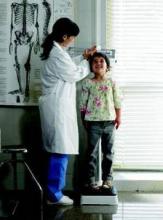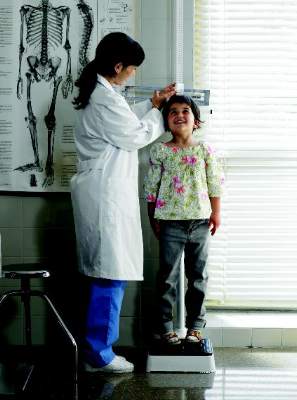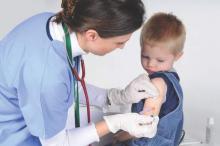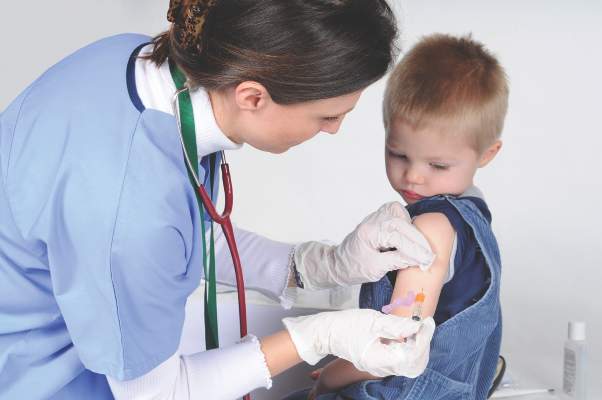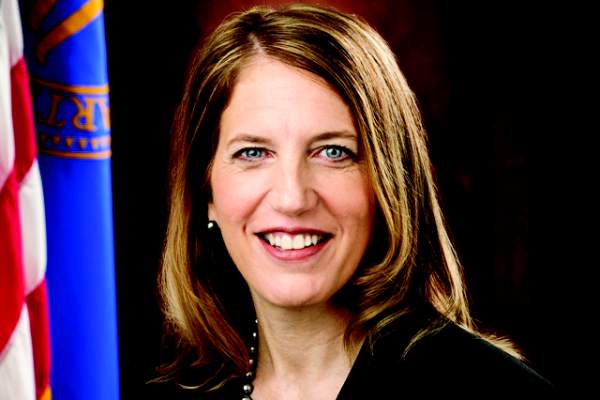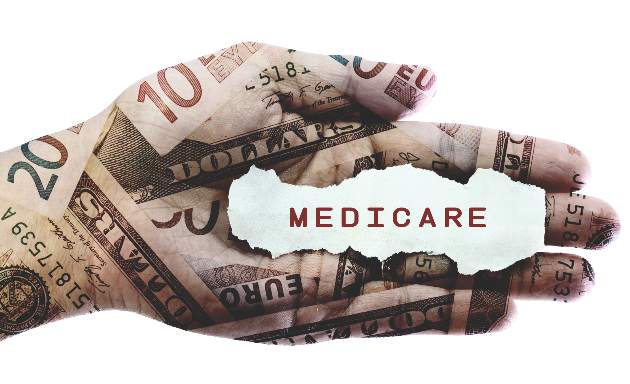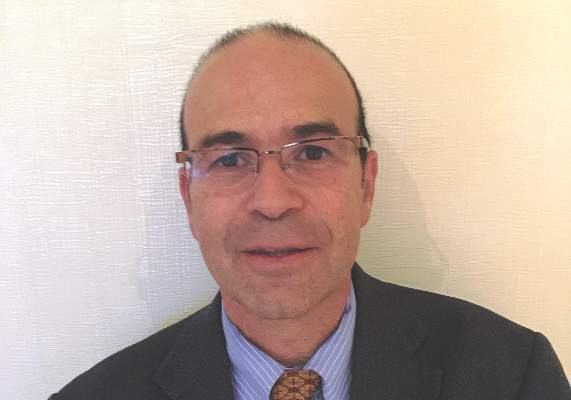User login
CMS extends deadline for 2015 EHR attestation
Physicians and hospitals will have an extra 2 weeks to attest to meaningful use of electronic health records in 2015.
The deadline for attesting to 90 days of continuous use during the calendar year for physicians or from Oct. 1, 2014, through the end of 2015 for hospitals is now March 11. Previously, attestations were due Feb. 29 to avoid penalties under the EHR Incentive Program for not meeting meaningful use requirements in 2015.
The deadline was extended to align EHR attestation with the Physician Quality Reporting System, according to CMS officials.
Attestations can be made on the CMS website.
Physicians and hospitals will have an extra 2 weeks to attest to meaningful use of electronic health records in 2015.
The deadline for attesting to 90 days of continuous use during the calendar year for physicians or from Oct. 1, 2014, through the end of 2015 for hospitals is now March 11. Previously, attestations were due Feb. 29 to avoid penalties under the EHR Incentive Program for not meeting meaningful use requirements in 2015.
The deadline was extended to align EHR attestation with the Physician Quality Reporting System, according to CMS officials.
Attestations can be made on the CMS website.
Physicians and hospitals will have an extra 2 weeks to attest to meaningful use of electronic health records in 2015.
The deadline for attesting to 90 days of continuous use during the calendar year for physicians or from Oct. 1, 2014, through the end of 2015 for hospitals is now March 11. Previously, attestations were due Feb. 29 to avoid penalties under the EHR Incentive Program for not meeting meaningful use requirements in 2015.
The deadline was extended to align EHR attestation with the Physician Quality Reporting System, according to CMS officials.
Attestations can be made on the CMS website.
More kids gain insurance under ACA
The rate of uninsured children in the United States continues to decline, according to new research from the Robert Wood Johnson Foundation.
The number of children under age 19 without health insurance decreased by 1 million from 5.9 million in 2013 to 4.9 million in 2014 during the first full year of the Affordable Care Act, according to an analysis of U.S. Census data, prepared by the State Health Access Data Assistance Center at the University of Minnesota School of Public Health for RWJF. States saw either declines or stable rates of uninsured children, but none saw any significant increases.
The rate of uninsured children varied on a state-by-state basis, according to the report. Researchers found that in two states (Vermont and Massachusetts), fewer than 2% of children were uninsured, while in three states (Alaska, Texas and Arizona), more than 10% of children did not have insurance coverage.
Overall, six states (Texas, California, Florida, Georgia, Arizona, and New York) account for nearly half of the nation’s nearly 5 million uninsured children, though four of them (California, Texas, Florida, and Georgia) also saw the largest reduction in uninsured children.
Gains were attributed to increases in both public and private insurance coverage, with the portion of children enrolled in private coverage increasing by 0.4% to 59.2%, while those enrolled in coverage through Medicaid and CHIP increased by 0.8% to 34.5%.
The rate of uninsured children in the United States continues to decline, according to new research from the Robert Wood Johnson Foundation.
The number of children under age 19 without health insurance decreased by 1 million from 5.9 million in 2013 to 4.9 million in 2014 during the first full year of the Affordable Care Act, according to an analysis of U.S. Census data, prepared by the State Health Access Data Assistance Center at the University of Minnesota School of Public Health for RWJF. States saw either declines or stable rates of uninsured children, but none saw any significant increases.
The rate of uninsured children varied on a state-by-state basis, according to the report. Researchers found that in two states (Vermont and Massachusetts), fewer than 2% of children were uninsured, while in three states (Alaska, Texas and Arizona), more than 10% of children did not have insurance coverage.
Overall, six states (Texas, California, Florida, Georgia, Arizona, and New York) account for nearly half of the nation’s nearly 5 million uninsured children, though four of them (California, Texas, Florida, and Georgia) also saw the largest reduction in uninsured children.
Gains were attributed to increases in both public and private insurance coverage, with the portion of children enrolled in private coverage increasing by 0.4% to 59.2%, while those enrolled in coverage through Medicaid and CHIP increased by 0.8% to 34.5%.
The rate of uninsured children in the United States continues to decline, according to new research from the Robert Wood Johnson Foundation.
The number of children under age 19 without health insurance decreased by 1 million from 5.9 million in 2013 to 4.9 million in 2014 during the first full year of the Affordable Care Act, according to an analysis of U.S. Census data, prepared by the State Health Access Data Assistance Center at the University of Minnesota School of Public Health for RWJF. States saw either declines or stable rates of uninsured children, but none saw any significant increases.
The rate of uninsured children varied on a state-by-state basis, according to the report. Researchers found that in two states (Vermont and Massachusetts), fewer than 2% of children were uninsured, while in three states (Alaska, Texas and Arizona), more than 10% of children did not have insurance coverage.
Overall, six states (Texas, California, Florida, Georgia, Arizona, and New York) account for nearly half of the nation’s nearly 5 million uninsured children, though four of them (California, Texas, Florida, and Georgia) also saw the largest reduction in uninsured children.
Gains were attributed to increases in both public and private insurance coverage, with the portion of children enrolled in private coverage increasing by 0.4% to 59.2%, while those enrolled in coverage through Medicaid and CHIP increased by 0.8% to 34.5%.
House panel says Medicare biosimilar payment plan will stifle innovation
Questions linger as to whether federal health care payment policies will encourage – or stifle – the entry of more biosimilars into the marketplace.
Getting the biosimilar approval process right “doesn’t matter unless we get the charging/reimbursement process right,” Rep. Joe Barton (R-Tex.), chairmen emeritus of the House Energy and Commerce Committee, said Feb. 4 during a Health Subcommittee hearing. Without a workable reimbursement process “there’s no incentive to create the drug in the first place. Nobody’s going to do it.”
At issue is how the Centers for Medicare & Medicaid Services plans to pay for biosimilars. The 2016 Medicare Physician Fee Schedule establishes that biosimilars would receive the same reimbursement code as their biologic innovator product and be paid at a weighted average of the average sales price of all biosimilars in that code, plus 6% of the innovator product.
Rep. Frank Pallone (D-N.J.), ranking member of the subcommittee, expressed concern over the policy. “I worry that this inappropriately treats biosimilars like generic drugs and will disincentivize manufacturers from entering the biosimilars marketplace. ... Biosimilars are not generics. Each is its own unique product and biosimilars go through a much more stringent approval process.”
Sean Cavanaugh, deputy administrator and director of the CMS, testified that in terms of market forces, there are enough similarities between generic drugs and biosimilars to maintain that kind of similarity. He added, however, that the CMS is open to changing reimbursement methodology “if we thought that our payment policy was not accomplishing what we expected it to.”
Rep. Brett Guthrie (R-Ky.), vice chairman of the subcommittee, said the reimbursement scheme could lead to “inappropriate switching between biosimilars – switching to a lower cost that is not the same [and] a less vibrant biosimilar market altogether.”
Mr. Cavanaugh noted that the CMS spends more than $1 billion on each of the top six drugs it pays for, all of which are biologics. “I think that alone creates the opportunity for a very vibrant market in biosimilars,” he said.
In addition, he did not see switching as an issue.
“Physicians do not order biologics or other drug products by billing code,” Mr. Cavanaugh said. “Similarly, pharmacists do not derive what switchings they are allowed to do based on billing codes.”
Questions linger as to whether federal health care payment policies will encourage – or stifle – the entry of more biosimilars into the marketplace.
Getting the biosimilar approval process right “doesn’t matter unless we get the charging/reimbursement process right,” Rep. Joe Barton (R-Tex.), chairmen emeritus of the House Energy and Commerce Committee, said Feb. 4 during a Health Subcommittee hearing. Without a workable reimbursement process “there’s no incentive to create the drug in the first place. Nobody’s going to do it.”
At issue is how the Centers for Medicare & Medicaid Services plans to pay for biosimilars. The 2016 Medicare Physician Fee Schedule establishes that biosimilars would receive the same reimbursement code as their biologic innovator product and be paid at a weighted average of the average sales price of all biosimilars in that code, plus 6% of the innovator product.
Rep. Frank Pallone (D-N.J.), ranking member of the subcommittee, expressed concern over the policy. “I worry that this inappropriately treats biosimilars like generic drugs and will disincentivize manufacturers from entering the biosimilars marketplace. ... Biosimilars are not generics. Each is its own unique product and biosimilars go through a much more stringent approval process.”
Sean Cavanaugh, deputy administrator and director of the CMS, testified that in terms of market forces, there are enough similarities between generic drugs and biosimilars to maintain that kind of similarity. He added, however, that the CMS is open to changing reimbursement methodology “if we thought that our payment policy was not accomplishing what we expected it to.”
Rep. Brett Guthrie (R-Ky.), vice chairman of the subcommittee, said the reimbursement scheme could lead to “inappropriate switching between biosimilars – switching to a lower cost that is not the same [and] a less vibrant biosimilar market altogether.”
Mr. Cavanaugh noted that the CMS spends more than $1 billion on each of the top six drugs it pays for, all of which are biologics. “I think that alone creates the opportunity for a very vibrant market in biosimilars,” he said.
In addition, he did not see switching as an issue.
“Physicians do not order biologics or other drug products by billing code,” Mr. Cavanaugh said. “Similarly, pharmacists do not derive what switchings they are allowed to do based on billing codes.”
Questions linger as to whether federal health care payment policies will encourage – or stifle – the entry of more biosimilars into the marketplace.
Getting the biosimilar approval process right “doesn’t matter unless we get the charging/reimbursement process right,” Rep. Joe Barton (R-Tex.), chairmen emeritus of the House Energy and Commerce Committee, said Feb. 4 during a Health Subcommittee hearing. Without a workable reimbursement process “there’s no incentive to create the drug in the first place. Nobody’s going to do it.”
At issue is how the Centers for Medicare & Medicaid Services plans to pay for biosimilars. The 2016 Medicare Physician Fee Schedule establishes that biosimilars would receive the same reimbursement code as their biologic innovator product and be paid at a weighted average of the average sales price of all biosimilars in that code, plus 6% of the innovator product.
Rep. Frank Pallone (D-N.J.), ranking member of the subcommittee, expressed concern over the policy. “I worry that this inappropriately treats biosimilars like generic drugs and will disincentivize manufacturers from entering the biosimilars marketplace. ... Biosimilars are not generics. Each is its own unique product and biosimilars go through a much more stringent approval process.”
Sean Cavanaugh, deputy administrator and director of the CMS, testified that in terms of market forces, there are enough similarities between generic drugs and biosimilars to maintain that kind of similarity. He added, however, that the CMS is open to changing reimbursement methodology “if we thought that our payment policy was not accomplishing what we expected it to.”
Rep. Brett Guthrie (R-Ky.), vice chairman of the subcommittee, said the reimbursement scheme could lead to “inappropriate switching between biosimilars – switching to a lower cost that is not the same [and] a less vibrant biosimilar market altogether.”
Mr. Cavanaugh noted that the CMS spends more than $1 billion on each of the top six drugs it pays for, all of which are biologics. “I think that alone creates the opportunity for a very vibrant market in biosimilars,” he said.
In addition, he did not see switching as an issue.
“Physicians do not order biologics or other drug products by billing code,” Mr. Cavanaugh said. “Similarly, pharmacists do not derive what switchings they are allowed to do based on billing codes.”
FROM A HOUSE ENERGY AND COMMERCE HEALTH SUBCOMMITTEE HEARING
More children getting vaccinated since Vaccines for Children inception
Vaccination rates have been improving since the introduction of the federal Vaccines for Children program, new research in Health Affairs showed.
Since the start of the VFC program in 1995, racial and ethnic disparities also have narrowed, as have income-related disparities – although at different rates, based on analysis of data from the National Immunization Survey.
“These gains may well be attributed to the impact of the program in reducing financial barriers to access,” Brendan Walsh, Ph.D., research fellow at City University London, and his colleagues wrote, although they are calling for a deeper investigation because the pattern of uptake “varied within groups differentiated by race and ethnicity over time.” The data analysis appears in the February 2016 issue of Health Affairs (2016;35[2]:356-64. doi: 10.1377/hlthaff.2015.1019).
For example, vaccination rates for polio among white children aged 19-35 months grew from 91% in the 1995-1997 survey period to 93% in 2011-2013. For black children, the rate grew from 87% to 92%, and for Hispanics, the rate improved from 87% to 92%.
“The largest increase in overall vaccination rates over time was observed among low-income Hispanic children,” the researchers noted. “While these children consistently had the lowest vaccination rates of all groups at the beginning of the VFC program, this was not the case in the later periods.”
The data, however, also revealed a need for more nuanced research into racial, ethnic, and income disparities.
“As the VFC program developed, disparities between blacks and Hispanics relative to whites decreased,” Dr. Walsh and his associates said. “However, among blacks, income-related disparities increased, while those among Hispanics decreased.”
The report’s authors also observed that reductions in disparities did not occur evenly over time, which demonstrates a need to understand how factors other than financial barriers, such as disease outbreaks and increased public awareness, are influencing vaccination rates, which in turn will provide “a fuller understanding of the contribution of the VFC program to the increase in uptake and reductions in disparities.”
“One potential future avenue of research may be to study the perceived benefit of some vaccines, the perceived severity of illness that vaccines prevent, and to what extent these perceptions influence the decisions of parents and vaccination providers (that is, physicians) to request or suggest vaccination,” the researchers said.
Coauthor Ciaran O’Neill was supported by a Health Research Board (Ireland) Research Leaders Award 2013.
Vaccination rates have been improving since the introduction of the federal Vaccines for Children program, new research in Health Affairs showed.
Since the start of the VFC program in 1995, racial and ethnic disparities also have narrowed, as have income-related disparities – although at different rates, based on analysis of data from the National Immunization Survey.
“These gains may well be attributed to the impact of the program in reducing financial barriers to access,” Brendan Walsh, Ph.D., research fellow at City University London, and his colleagues wrote, although they are calling for a deeper investigation because the pattern of uptake “varied within groups differentiated by race and ethnicity over time.” The data analysis appears in the February 2016 issue of Health Affairs (2016;35[2]:356-64. doi: 10.1377/hlthaff.2015.1019).
For example, vaccination rates for polio among white children aged 19-35 months grew from 91% in the 1995-1997 survey period to 93% in 2011-2013. For black children, the rate grew from 87% to 92%, and for Hispanics, the rate improved from 87% to 92%.
“The largest increase in overall vaccination rates over time was observed among low-income Hispanic children,” the researchers noted. “While these children consistently had the lowest vaccination rates of all groups at the beginning of the VFC program, this was not the case in the later periods.”
The data, however, also revealed a need for more nuanced research into racial, ethnic, and income disparities.
“As the VFC program developed, disparities between blacks and Hispanics relative to whites decreased,” Dr. Walsh and his associates said. “However, among blacks, income-related disparities increased, while those among Hispanics decreased.”
The report’s authors also observed that reductions in disparities did not occur evenly over time, which demonstrates a need to understand how factors other than financial barriers, such as disease outbreaks and increased public awareness, are influencing vaccination rates, which in turn will provide “a fuller understanding of the contribution of the VFC program to the increase in uptake and reductions in disparities.”
“One potential future avenue of research may be to study the perceived benefit of some vaccines, the perceived severity of illness that vaccines prevent, and to what extent these perceptions influence the decisions of parents and vaccination providers (that is, physicians) to request or suggest vaccination,” the researchers said.
Coauthor Ciaran O’Neill was supported by a Health Research Board (Ireland) Research Leaders Award 2013.
Vaccination rates have been improving since the introduction of the federal Vaccines for Children program, new research in Health Affairs showed.
Since the start of the VFC program in 1995, racial and ethnic disparities also have narrowed, as have income-related disparities – although at different rates, based on analysis of data from the National Immunization Survey.
“These gains may well be attributed to the impact of the program in reducing financial barriers to access,” Brendan Walsh, Ph.D., research fellow at City University London, and his colleagues wrote, although they are calling for a deeper investigation because the pattern of uptake “varied within groups differentiated by race and ethnicity over time.” The data analysis appears in the February 2016 issue of Health Affairs (2016;35[2]:356-64. doi: 10.1377/hlthaff.2015.1019).
For example, vaccination rates for polio among white children aged 19-35 months grew from 91% in the 1995-1997 survey period to 93% in 2011-2013. For black children, the rate grew from 87% to 92%, and for Hispanics, the rate improved from 87% to 92%.
“The largest increase in overall vaccination rates over time was observed among low-income Hispanic children,” the researchers noted. “While these children consistently had the lowest vaccination rates of all groups at the beginning of the VFC program, this was not the case in the later periods.”
The data, however, also revealed a need for more nuanced research into racial, ethnic, and income disparities.
“As the VFC program developed, disparities between blacks and Hispanics relative to whites decreased,” Dr. Walsh and his associates said. “However, among blacks, income-related disparities increased, while those among Hispanics decreased.”
The report’s authors also observed that reductions in disparities did not occur evenly over time, which demonstrates a need to understand how factors other than financial barriers, such as disease outbreaks and increased public awareness, are influencing vaccination rates, which in turn will provide “a fuller understanding of the contribution of the VFC program to the increase in uptake and reductions in disparities.”
“One potential future avenue of research may be to study the perceived benefit of some vaccines, the perceived severity of illness that vaccines prevent, and to what extent these perceptions influence the decisions of parents and vaccination providers (that is, physicians) to request or suggest vaccination,” the researchers said.
Coauthor Ciaran O’Neill was supported by a Health Research Board (Ireland) Research Leaders Award 2013.
FROM HEALTH AFFAIRS
More than 90% of Americans have health insurance, HHS reports
About 12.7 million people have either selected plans or were automatically reenrolled through the federal or state-based individual insurance marketplaces during the open enrollment period for the 2016 plan year, the U.S. Department of Health & Human Services reported.
An additional 400,000 people in Minnesota and New York enrolled through the Basic Health Program, a state-based program that provides health insurance coverage to low-income individuals who would otherwise be eligible to purchase on the exchanges.
“As the Affordable Care Act has taken effect, more than 17.6 million Americans gained coverage through late last summer,” HHS Secretary Sylvia Burwell said during a Feb. 2 teleconference. “More than 90% of Americans are insured. That’s the first time this has ever been true.”
In detailing enrollment through the federal marketplace, HHS reported that of the 9.6 million people who received coverage through the exchange, 42%, or 4 million, were new enrollees.
“While we won’t know how this season’s sign-ups will precisely impact the uninsured rate until later in the year, it’s clear that, with these 4 million people who are new to Medicaid, and the improving economy, we will continue to make progress,” Ms. Burwell said.
The new enrollees are also important to “help refresh” the risk pools, Health Insurance Marketplace CEO Kevin Counihan said during the call. In responding to a question about larger insurers possibly bowing out of the exchanges, he noted that the higher utilizers of health care services were more likely to have joined in the first 2 years, and those new enrollees are likely to be in a different place in terms of their health care needs.
About 12.7 million people have either selected plans or were automatically reenrolled through the federal or state-based individual insurance marketplaces during the open enrollment period for the 2016 plan year, the U.S. Department of Health & Human Services reported.
An additional 400,000 people in Minnesota and New York enrolled through the Basic Health Program, a state-based program that provides health insurance coverage to low-income individuals who would otherwise be eligible to purchase on the exchanges.
“As the Affordable Care Act has taken effect, more than 17.6 million Americans gained coverage through late last summer,” HHS Secretary Sylvia Burwell said during a Feb. 2 teleconference. “More than 90% of Americans are insured. That’s the first time this has ever been true.”
In detailing enrollment through the federal marketplace, HHS reported that of the 9.6 million people who received coverage through the exchange, 42%, or 4 million, were new enrollees.
“While we won’t know how this season’s sign-ups will precisely impact the uninsured rate until later in the year, it’s clear that, with these 4 million people who are new to Medicaid, and the improving economy, we will continue to make progress,” Ms. Burwell said.
The new enrollees are also important to “help refresh” the risk pools, Health Insurance Marketplace CEO Kevin Counihan said during the call. In responding to a question about larger insurers possibly bowing out of the exchanges, he noted that the higher utilizers of health care services were more likely to have joined in the first 2 years, and those new enrollees are likely to be in a different place in terms of their health care needs.
About 12.7 million people have either selected plans or were automatically reenrolled through the federal or state-based individual insurance marketplaces during the open enrollment period for the 2016 plan year, the U.S. Department of Health & Human Services reported.
An additional 400,000 people in Minnesota and New York enrolled through the Basic Health Program, a state-based program that provides health insurance coverage to low-income individuals who would otherwise be eligible to purchase on the exchanges.
“As the Affordable Care Act has taken effect, more than 17.6 million Americans gained coverage through late last summer,” HHS Secretary Sylvia Burwell said during a Feb. 2 teleconference. “More than 90% of Americans are insured. That’s the first time this has ever been true.”
In detailing enrollment through the federal marketplace, HHS reported that of the 9.6 million people who received coverage through the exchange, 42%, or 4 million, were new enrollees.
“While we won’t know how this season’s sign-ups will precisely impact the uninsured rate until later in the year, it’s clear that, with these 4 million people who are new to Medicaid, and the improving economy, we will continue to make progress,” Ms. Burwell said.
The new enrollees are also important to “help refresh” the risk pools, Health Insurance Marketplace CEO Kevin Counihan said during the call. In responding to a question about larger insurers possibly bowing out of the exchanges, he noted that the higher utilizers of health care services were more likely to have joined in the first 2 years, and those new enrollees are likely to be in a different place in terms of their health care needs.
HPV vaccinations get a boost from MOC requirements
Pediatricians saw an increase in the human papillomavirus vaccines administered after participating in a maintenance of certification Part IV program focused on improving vaccine rates.
Researchers “found that participation in the MOC Part IV by primary care pediatricians was associated with a significant increase in captured opportunities for HPV vaccine initiation at prevention visits and for doses 1 and 2 at acute visits,” wrote Dr. Alexander Fiks of The Children’s Hospital of Philadelphia and colleagues. The article was published online in Pediatrics (2016 Feb. 3 [doi: 10.1542/peds.2015-0675]).
For the project, vaccination captured opportunity was defined as a visit at which an eligible patient saw a pediatrician or nurse practitioner and received a dose of the HPV vaccine. A baseline period was established in calendar year 2012 and the intervention period was between Jan. 1 and Nov. 30, 2013, and looked both at captured opportunities during preventive and acute visits. Providers received quarterly performance feedback reports, which included individual results as well as information on how others in the program were doing.
Twenty-seven primary care pediatricians volunteered to participate in the program. They identified barriers in literature and group discussion and viewed an educational webinar that, among other things, included strategies to overcoming barriers to vaccination. They also took part in quarterly calls to review performance and decide on areas of improvement for the next quarter.
During preventive visits, dose 1 captured opportunities captured by MOC participants rose from the baseline period of 27.9% to 37.9% in the MOC period. Dose 2 captured opportunities rose from 87.7% to 93.3% and dose 3 from 94.1% to 94.5%. During acute visits, captured opportunities for dose 1 rose from 2% to 2.9%, from 28.2% to 34.2% for dose 2, and 24.5% to 32.2% for dose 3.
For the 200 other providers in the network, who were also tracked during the same baseline period and MOC period, for preventive visits, captured opportunities rose from 25.2% to 29.4% for dose 1, 85.7% to 88.1% for dose 2, and 89.4% to 92.2% for dose 3. During acute visits, captured opportunities rose from 1.2% to 1.4% for dose 1, 20% to 20.5% for dose 2, and 20% to 22.3% for dose 3.
“Although the magnitude of improvement for HPV dose 1 at acute visits was small given clinician difficulty in engaging in lengthy conversations regarding vaccination at these visits, capture opportunities rose significantly for dose 1 for all visits,” the authors noted. “Vaccination increased for HPV dose 2 at acute visits to a much greater extent than for dose 1, likely because families had already agreed to accept the vaccine and were receptive to clinician recommendation, which was supported by all the MOC activities.”
Dr. Fiks and colleagues added that the lack of improvement for HPV doses 2 and 3 at preventive visits “likely reflected the high baseline vaccination rates, representing a ceiling effect.”
The authors noted that despite improvements, several barriers remained to further improve the rate of captured opportunities, including many pediatricians resisting vaccinating younger adolescents “under the sometimes mistaken assumption that they can determine who is and who will become sexually active. ... In addition, clinicians are known to perceive a higher level of parental resistance among parents of younger adolescents, indicating a need to further support improved communications with specific messaging strategies.”
They also added that because of the way the study was designed, with a focus on the effect of MOC on the individual provider absent an overall organizational push, it may have constrained the ability to improve vaccination rates more broadly.
In South Carolina, we’ve used MOC extensively to engage pediatricians in quality improvement [with the first goal of moving] new policy into practice ... Engaging these practices and doing this quality improvement work, the MOC requirement is a huge carrot for us to put out there to engage practices in doing this kind of work. [The second goal] is basically just looking at outcomes of kids and could your outcomes be better and if they are not good, what kinds of resources can help them be better.
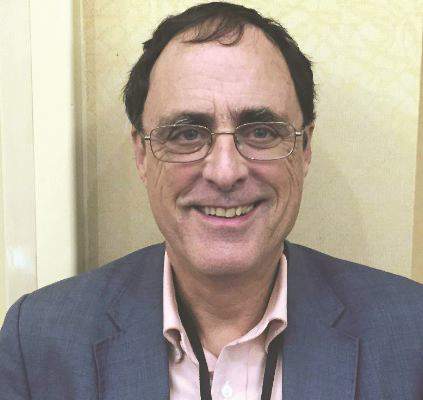 |
Dr. Francis E. Rushton Jr. |
The other role the MOC Part IV credit plays is that when we do this quality improvement work, we embed a quality improvement team in each of our participating practices and that team would include a chief clinician, a nurse, and front office manager or somebody who works with administrative staff. Often, you get some excitement and some engagement with the chief clinician, but it’s hard to spread that excitement and engagement among the other clinicians in the practice until some of them realize, “hey I’ve got to pay attention to this because this is the only way I am going to be able to maintain my board certification, that this process is going to give me Part IV MOC credit.”
Dr. Francis E. Rushton Jr., a pediatrician in Beaufort, S.C., made these comments in an interview.
In South Carolina, we’ve used MOC extensively to engage pediatricians in quality improvement [with the first goal of moving] new policy into practice ... Engaging these practices and doing this quality improvement work, the MOC requirement is a huge carrot for us to put out there to engage practices in doing this kind of work. [The second goal] is basically just looking at outcomes of kids and could your outcomes be better and if they are not good, what kinds of resources can help them be better.
 |
Dr. Francis E. Rushton Jr. |
The other role the MOC Part IV credit plays is that when we do this quality improvement work, we embed a quality improvement team in each of our participating practices and that team would include a chief clinician, a nurse, and front office manager or somebody who works with administrative staff. Often, you get some excitement and some engagement with the chief clinician, but it’s hard to spread that excitement and engagement among the other clinicians in the practice until some of them realize, “hey I’ve got to pay attention to this because this is the only way I am going to be able to maintain my board certification, that this process is going to give me Part IV MOC credit.”
Dr. Francis E. Rushton Jr., a pediatrician in Beaufort, S.C., made these comments in an interview.
In South Carolina, we’ve used MOC extensively to engage pediatricians in quality improvement [with the first goal of moving] new policy into practice ... Engaging these practices and doing this quality improvement work, the MOC requirement is a huge carrot for us to put out there to engage practices in doing this kind of work. [The second goal] is basically just looking at outcomes of kids and could your outcomes be better and if they are not good, what kinds of resources can help them be better.
 |
Dr. Francis E. Rushton Jr. |
The other role the MOC Part IV credit plays is that when we do this quality improvement work, we embed a quality improvement team in each of our participating practices and that team would include a chief clinician, a nurse, and front office manager or somebody who works with administrative staff. Often, you get some excitement and some engagement with the chief clinician, but it’s hard to spread that excitement and engagement among the other clinicians in the practice until some of them realize, “hey I’ve got to pay attention to this because this is the only way I am going to be able to maintain my board certification, that this process is going to give me Part IV MOC credit.”
Dr. Francis E. Rushton Jr., a pediatrician in Beaufort, S.C., made these comments in an interview.
Pediatricians saw an increase in the human papillomavirus vaccines administered after participating in a maintenance of certification Part IV program focused on improving vaccine rates.
Researchers “found that participation in the MOC Part IV by primary care pediatricians was associated with a significant increase in captured opportunities for HPV vaccine initiation at prevention visits and for doses 1 and 2 at acute visits,” wrote Dr. Alexander Fiks of The Children’s Hospital of Philadelphia and colleagues. The article was published online in Pediatrics (2016 Feb. 3 [doi: 10.1542/peds.2015-0675]).
For the project, vaccination captured opportunity was defined as a visit at which an eligible patient saw a pediatrician or nurse practitioner and received a dose of the HPV vaccine. A baseline period was established in calendar year 2012 and the intervention period was between Jan. 1 and Nov. 30, 2013, and looked both at captured opportunities during preventive and acute visits. Providers received quarterly performance feedback reports, which included individual results as well as information on how others in the program were doing.
Twenty-seven primary care pediatricians volunteered to participate in the program. They identified barriers in literature and group discussion and viewed an educational webinar that, among other things, included strategies to overcoming barriers to vaccination. They also took part in quarterly calls to review performance and decide on areas of improvement for the next quarter.
During preventive visits, dose 1 captured opportunities captured by MOC participants rose from the baseline period of 27.9% to 37.9% in the MOC period. Dose 2 captured opportunities rose from 87.7% to 93.3% and dose 3 from 94.1% to 94.5%. During acute visits, captured opportunities for dose 1 rose from 2% to 2.9%, from 28.2% to 34.2% for dose 2, and 24.5% to 32.2% for dose 3.
For the 200 other providers in the network, who were also tracked during the same baseline period and MOC period, for preventive visits, captured opportunities rose from 25.2% to 29.4% for dose 1, 85.7% to 88.1% for dose 2, and 89.4% to 92.2% for dose 3. During acute visits, captured opportunities rose from 1.2% to 1.4% for dose 1, 20% to 20.5% for dose 2, and 20% to 22.3% for dose 3.
“Although the magnitude of improvement for HPV dose 1 at acute visits was small given clinician difficulty in engaging in lengthy conversations regarding vaccination at these visits, capture opportunities rose significantly for dose 1 for all visits,” the authors noted. “Vaccination increased for HPV dose 2 at acute visits to a much greater extent than for dose 1, likely because families had already agreed to accept the vaccine and were receptive to clinician recommendation, which was supported by all the MOC activities.”
Dr. Fiks and colleagues added that the lack of improvement for HPV doses 2 and 3 at preventive visits “likely reflected the high baseline vaccination rates, representing a ceiling effect.”
The authors noted that despite improvements, several barriers remained to further improve the rate of captured opportunities, including many pediatricians resisting vaccinating younger adolescents “under the sometimes mistaken assumption that they can determine who is and who will become sexually active. ... In addition, clinicians are known to perceive a higher level of parental resistance among parents of younger adolescents, indicating a need to further support improved communications with specific messaging strategies.”
They also added that because of the way the study was designed, with a focus on the effect of MOC on the individual provider absent an overall organizational push, it may have constrained the ability to improve vaccination rates more broadly.
Pediatricians saw an increase in the human papillomavirus vaccines administered after participating in a maintenance of certification Part IV program focused on improving vaccine rates.
Researchers “found that participation in the MOC Part IV by primary care pediatricians was associated with a significant increase in captured opportunities for HPV vaccine initiation at prevention visits and for doses 1 and 2 at acute visits,” wrote Dr. Alexander Fiks of The Children’s Hospital of Philadelphia and colleagues. The article was published online in Pediatrics (2016 Feb. 3 [doi: 10.1542/peds.2015-0675]).
For the project, vaccination captured opportunity was defined as a visit at which an eligible patient saw a pediatrician or nurse practitioner and received a dose of the HPV vaccine. A baseline period was established in calendar year 2012 and the intervention period was between Jan. 1 and Nov. 30, 2013, and looked both at captured opportunities during preventive and acute visits. Providers received quarterly performance feedback reports, which included individual results as well as information on how others in the program were doing.
Twenty-seven primary care pediatricians volunteered to participate in the program. They identified barriers in literature and group discussion and viewed an educational webinar that, among other things, included strategies to overcoming barriers to vaccination. They also took part in quarterly calls to review performance and decide on areas of improvement for the next quarter.
During preventive visits, dose 1 captured opportunities captured by MOC participants rose from the baseline period of 27.9% to 37.9% in the MOC period. Dose 2 captured opportunities rose from 87.7% to 93.3% and dose 3 from 94.1% to 94.5%. During acute visits, captured opportunities for dose 1 rose from 2% to 2.9%, from 28.2% to 34.2% for dose 2, and 24.5% to 32.2% for dose 3.
For the 200 other providers in the network, who were also tracked during the same baseline period and MOC period, for preventive visits, captured opportunities rose from 25.2% to 29.4% for dose 1, 85.7% to 88.1% for dose 2, and 89.4% to 92.2% for dose 3. During acute visits, captured opportunities rose from 1.2% to 1.4% for dose 1, 20% to 20.5% for dose 2, and 20% to 22.3% for dose 3.
“Although the magnitude of improvement for HPV dose 1 at acute visits was small given clinician difficulty in engaging in lengthy conversations regarding vaccination at these visits, capture opportunities rose significantly for dose 1 for all visits,” the authors noted. “Vaccination increased for HPV dose 2 at acute visits to a much greater extent than for dose 1, likely because families had already agreed to accept the vaccine and were receptive to clinician recommendation, which was supported by all the MOC activities.”
Dr. Fiks and colleagues added that the lack of improvement for HPV doses 2 and 3 at preventive visits “likely reflected the high baseline vaccination rates, representing a ceiling effect.”
The authors noted that despite improvements, several barriers remained to further improve the rate of captured opportunities, including many pediatricians resisting vaccinating younger adolescents “under the sometimes mistaken assumption that they can determine who is and who will become sexually active. ... In addition, clinicians are known to perceive a higher level of parental resistance among parents of younger adolescents, indicating a need to further support improved communications with specific messaging strategies.”
They also added that because of the way the study was designed, with a focus on the effect of MOC on the individual provider absent an overall organizational push, it may have constrained the ability to improve vaccination rates more broadly.
FROM PEDIATRICS
Key clinical point: Incorporating HPV vaccine outcomes in maintenance of certification requirements boosted captured opportunities for vaccine initiation.
Major finding: MOC participants significantly increase captured opportunities relative to nonparticipants by 5.7% for HPV dose 1 at preventive visits.
Data source: Twenty-seven primary care pediatricians from 11 practices in The Children’s Hospital of Philadelphia primary care network voluntarily chose to participate in the project with no incentives provided other than receiving MOC Part IV credit.
Disclosures: Study authors reported no potential conflicts of interest.
Medicare Shared Savings Program proposed changes reflect regional performance
Accountable care organizations participating in the Medicare Shared Savings Program would share savings and losses based on how they are performing on a regional level under a new proposal.
The Centers for Medicare and Medicaid services issued the proposed rule Jan. 28. The rule makes several changes to the program that are “focused on incorporating regional fee-for-service expenditures into the methodology for establishing, adjusting, and updating an ACO’s historical benchmark for its second or subsequent agreement period,” the agency said in a fact sheet.
The agency is hoping these changes will provide a greater incentive for continued ACO participation and improvement.
The rule comes after CMS found that while the 20 Pioneer ACOs and another 333 ACOs generated savings in 2014, only 97 qualified for shared savings bonus payments.
In calculating the new and updated benchmarks, CMS proposes to use regional spending growth trends rather than national ones. Benchmarks will be adjusted in the second or subsequent agreement period based on a percentage difference between fee-for-service spending in an ACO’s regional service area and the ACO’s historical spending.
The agency plans to apply the changes in resetting an ACO’s benchmark for a second or subsequent agreement period beginning on or after Jan. 1, 2017.
Other aspects of the proposed rule include benchmark adjustments to account for changes in the ACO’s patient mix, the release of new data files to help ACOs and other stakeholders to build their own models based on the new benchmark methodology, facilitating the transition to a two-sided performance program that allows ACOs to share in both the savings and losses, and more clearly defining the time-line when challenges can be made to the calculation of a shared savings or loss.
Comments on the proposed rule are due March 28.
Accountable care organizations participating in the Medicare Shared Savings Program would share savings and losses based on how they are performing on a regional level under a new proposal.
The Centers for Medicare and Medicaid services issued the proposed rule Jan. 28. The rule makes several changes to the program that are “focused on incorporating regional fee-for-service expenditures into the methodology for establishing, adjusting, and updating an ACO’s historical benchmark for its second or subsequent agreement period,” the agency said in a fact sheet.
The agency is hoping these changes will provide a greater incentive for continued ACO participation and improvement.
The rule comes after CMS found that while the 20 Pioneer ACOs and another 333 ACOs generated savings in 2014, only 97 qualified for shared savings bonus payments.
In calculating the new and updated benchmarks, CMS proposes to use regional spending growth trends rather than national ones. Benchmarks will be adjusted in the second or subsequent agreement period based on a percentage difference between fee-for-service spending in an ACO’s regional service area and the ACO’s historical spending.
The agency plans to apply the changes in resetting an ACO’s benchmark for a second or subsequent agreement period beginning on or after Jan. 1, 2017.
Other aspects of the proposed rule include benchmark adjustments to account for changes in the ACO’s patient mix, the release of new data files to help ACOs and other stakeholders to build their own models based on the new benchmark methodology, facilitating the transition to a two-sided performance program that allows ACOs to share in both the savings and losses, and more clearly defining the time-line when challenges can be made to the calculation of a shared savings or loss.
Comments on the proposed rule are due March 28.
Accountable care organizations participating in the Medicare Shared Savings Program would share savings and losses based on how they are performing on a regional level under a new proposal.
The Centers for Medicare and Medicaid services issued the proposed rule Jan. 28. The rule makes several changes to the program that are “focused on incorporating regional fee-for-service expenditures into the methodology for establishing, adjusting, and updating an ACO’s historical benchmark for its second or subsequent agreement period,” the agency said in a fact sheet.
The agency is hoping these changes will provide a greater incentive for continued ACO participation and improvement.
The rule comes after CMS found that while the 20 Pioneer ACOs and another 333 ACOs generated savings in 2014, only 97 qualified for shared savings bonus payments.
In calculating the new and updated benchmarks, CMS proposes to use regional spending growth trends rather than national ones. Benchmarks will be adjusted in the second or subsequent agreement period based on a percentage difference between fee-for-service spending in an ACO’s regional service area and the ACO’s historical spending.
The agency plans to apply the changes in resetting an ACO’s benchmark for a second or subsequent agreement period beginning on or after Jan. 1, 2017.
Other aspects of the proposed rule include benchmark adjustments to account for changes in the ACO’s patient mix, the release of new data files to help ACOs and other stakeholders to build their own models based on the new benchmark methodology, facilitating the transition to a two-sided performance program that allows ACOs to share in both the savings and losses, and more clearly defining the time-line when challenges can be made to the calculation of a shared savings or loss.
Comments on the proposed rule are due March 28.
CMS releases applications, instructions for 2015 meaningful use hardship exemptions
The Centers for Medicare & Medicaid Services has released the applications for meaningful use hardship exemptions for 2015.
Physicians who qualify for a hardship exemption must apply by March 15; hospitals must apply by April 1 to avoid being penalized in 2017. Exemptions may be granted for those facing infrastructure-related problems, unforeseen circumstances, lack of face-to-face interactions, or lack of available certified electronic health record systems.
As part of the Patient Access and Medicare Protection Act, passed in December 2015, CMS will be able to process blocks of applications instead of on a case-by-case basis, as it was required to do prior to the new law.
Applications and instructions are available here.
The Centers for Medicare & Medicaid Services has released the applications for meaningful use hardship exemptions for 2015.
Physicians who qualify for a hardship exemption must apply by March 15; hospitals must apply by April 1 to avoid being penalized in 2017. Exemptions may be granted for those facing infrastructure-related problems, unforeseen circumstances, lack of face-to-face interactions, or lack of available certified electronic health record systems.
As part of the Patient Access and Medicare Protection Act, passed in December 2015, CMS will be able to process blocks of applications instead of on a case-by-case basis, as it was required to do prior to the new law.
Applications and instructions are available here.
The Centers for Medicare & Medicaid Services has released the applications for meaningful use hardship exemptions for 2015.
Physicians who qualify for a hardship exemption must apply by March 15; hospitals must apply by April 1 to avoid being penalized in 2017. Exemptions may be granted for those facing infrastructure-related problems, unforeseen circumstances, lack of face-to-face interactions, or lack of available certified electronic health record systems.
As part of the Patient Access and Medicare Protection Act, passed in December 2015, CMS will be able to process blocks of applications instead of on a case-by-case basis, as it was required to do prior to the new law.
Applications and instructions are available here.
ABIM delays MOC's assessment requirement until 2019
The American Board of Internal Medicine announced that it won’t implement its maintenance of certification program’s practice assessment, patient voice, and patient safety components no earlier than Jan. 1, 2019.
ABIM had previously delayed the three requirements until the end of 2016, but it extended the delay following recommendations from a task force formed to look at the overall maintenance of certification program.
The Assessment 2020 Task Force report suggested that ABIM should step back from assessing physicians’ quality of care and performance improvement. That portion has received pushback from the physician community, and that feedback contributed to the decision to delay.
“We decided to extend our decision not to require practice assessment while we work to expand the list of activities we recognize for MOC credit and seek partnerships to increase clinically relevant opportunities for doctors to engage in this important work,” said ABIM Chief Medical Officer Richard Battaglia. “Physicians can still earn MOC points for completing approved practice assessment activities, and one of the pathways for these points is through the American Board of Medical Specialties Multispecialty Portfolio Approval Program.”
ABIM will provide at least a full year’s notice when the requirements are reinstated, with updates on progress being communicated through the Transforming ABIM blog, Dr. Battaglia noted.
The delay, however, does not lessen the importance of practice assessment, he cautioned.
“We hear from physicians that completing these activities allows them to look at data from their practice and implement quality improvements that lead to better care for their patients and improved processes in their practice,” Dr. Battaglia said. “But we also hear from physician feedback that the MOC program should do a better job recognizing meaningful activities they are already doing in practice.”
He also called on physicians to continue providing feedback to help ensure that MOC is a meaningful and relevant program.
“We want physicians to help us shape a MOC program that is meaningful and relevant, which is why we are looking to ensure that physicians receive credit for important quality improvement work they are already doing in practice,” Dr. Battaglia said. “Physicians have been telling us that there are many meaningful quality improvement programs that we could give credit for, so we are acting on their input to do a better job recognizing these activities physicians are already doing in practice.”
The American College of Physicians applauded ABIM’s decision to delay.
“The reaction from the physician community, the reaction from ACP, and certainly my own personal reaction is that we applaud that they are suspending the requirement longer,” ACP CEO Steven Weinberger said in an interview. “It will take more time to sort out what kind of role the board should have in those forms of assessment, and whether in fact they might just be able to use assessments provided by other organizations rather than doing the assessment themselves.”
He suggested that ABIM is looking at where it can incorporate assessments by other organizations, including public and private insurers, so it can remain focused on assessing knowledge and clinical skill.
“I think one of things they want to avoid is redundancy – a physician’s performance might be measured in the insurance environment, whether it be private or public, and then separately. ABIM is doing that same sort of measurement,” Dr. Weinberger said.
In December 2015, the ABIM put changes in place allowing the AGA to offer an expanded portfolio of MOC offerings, awarding MOC where members are already earning CME.
• Not all CME is eligible for MOC under the new rules. AGA will highlight in all future offerings places where MOC will be offered in addition to CME.
• The change is not only for activities moving forward. AGA is able to offer retroactive credit for eligible CME activities completed in 2015. These activities include Journal CME, DDSEP CME, and CME earned through the AGA Spring Postgraduate Course online sessions.
• Most participant data from these activities has already been reported to the ABIM on your behalf. To see your current MOC total, visit the ABIM and log in to your physician portal; https://www.abim.org/ONLINE/DEFAULT.ASPX.
• If you believe you completed an eligible AGA CME activity in 2015, but do not see the MOC credit in your ABIM profile, please contact MOC@gastro.org. It is most helpful if you can include your ABIM number and date of birth in your request.
• Some 2014 CME activities are also eligible for retroactive MOC credit. Physician participation data for these 2014 activities are currently being imported to the ABIM. If you see a specific activity missing from your ABIM Physician Profile, please contact MOC@gastro.org.
gtwachtman@frontlinemedcom.com
The American Board of Internal Medicine announced that it won’t implement its maintenance of certification program’s practice assessment, patient voice, and patient safety components no earlier than Jan. 1, 2019.
ABIM had previously delayed the three requirements until the end of 2016, but it extended the delay following recommendations from a task force formed to look at the overall maintenance of certification program.
The Assessment 2020 Task Force report suggested that ABIM should step back from assessing physicians’ quality of care and performance improvement. That portion has received pushback from the physician community, and that feedback contributed to the decision to delay.
“We decided to extend our decision not to require practice assessment while we work to expand the list of activities we recognize for MOC credit and seek partnerships to increase clinically relevant opportunities for doctors to engage in this important work,” said ABIM Chief Medical Officer Richard Battaglia. “Physicians can still earn MOC points for completing approved practice assessment activities, and one of the pathways for these points is through the American Board of Medical Specialties Multispecialty Portfolio Approval Program.”
ABIM will provide at least a full year’s notice when the requirements are reinstated, with updates on progress being communicated through the Transforming ABIM blog, Dr. Battaglia noted.
The delay, however, does not lessen the importance of practice assessment, he cautioned.
“We hear from physicians that completing these activities allows them to look at data from their practice and implement quality improvements that lead to better care for their patients and improved processes in their practice,” Dr. Battaglia said. “But we also hear from physician feedback that the MOC program should do a better job recognizing meaningful activities they are already doing in practice.”
He also called on physicians to continue providing feedback to help ensure that MOC is a meaningful and relevant program.
“We want physicians to help us shape a MOC program that is meaningful and relevant, which is why we are looking to ensure that physicians receive credit for important quality improvement work they are already doing in practice,” Dr. Battaglia said. “Physicians have been telling us that there are many meaningful quality improvement programs that we could give credit for, so we are acting on their input to do a better job recognizing these activities physicians are already doing in practice.”
The American College of Physicians applauded ABIM’s decision to delay.
“The reaction from the physician community, the reaction from ACP, and certainly my own personal reaction is that we applaud that they are suspending the requirement longer,” ACP CEO Steven Weinberger said in an interview. “It will take more time to sort out what kind of role the board should have in those forms of assessment, and whether in fact they might just be able to use assessments provided by other organizations rather than doing the assessment themselves.”
He suggested that ABIM is looking at where it can incorporate assessments by other organizations, including public and private insurers, so it can remain focused on assessing knowledge and clinical skill.
“I think one of things they want to avoid is redundancy – a physician’s performance might be measured in the insurance environment, whether it be private or public, and then separately. ABIM is doing that same sort of measurement,” Dr. Weinberger said.
In December 2015, the ABIM put changes in place allowing the AGA to offer an expanded portfolio of MOC offerings, awarding MOC where members are already earning CME.
• Not all CME is eligible for MOC under the new rules. AGA will highlight in all future offerings places where MOC will be offered in addition to CME.
• The change is not only for activities moving forward. AGA is able to offer retroactive credit for eligible CME activities completed in 2015. These activities include Journal CME, DDSEP CME, and CME earned through the AGA Spring Postgraduate Course online sessions.
• Most participant data from these activities has already been reported to the ABIM on your behalf. To see your current MOC total, visit the ABIM and log in to your physician portal; https://www.abim.org/ONLINE/DEFAULT.ASPX.
• If you believe you completed an eligible AGA CME activity in 2015, but do not see the MOC credit in your ABIM profile, please contact MOC@gastro.org. It is most helpful if you can include your ABIM number and date of birth in your request.
• Some 2014 CME activities are also eligible for retroactive MOC credit. Physician participation data for these 2014 activities are currently being imported to the ABIM. If you see a specific activity missing from your ABIM Physician Profile, please contact MOC@gastro.org.
gtwachtman@frontlinemedcom.com
The American Board of Internal Medicine announced that it won’t implement its maintenance of certification program’s practice assessment, patient voice, and patient safety components no earlier than Jan. 1, 2019.
ABIM had previously delayed the three requirements until the end of 2016, but it extended the delay following recommendations from a task force formed to look at the overall maintenance of certification program.
The Assessment 2020 Task Force report suggested that ABIM should step back from assessing physicians’ quality of care and performance improvement. That portion has received pushback from the physician community, and that feedback contributed to the decision to delay.
“We decided to extend our decision not to require practice assessment while we work to expand the list of activities we recognize for MOC credit and seek partnerships to increase clinically relevant opportunities for doctors to engage in this important work,” said ABIM Chief Medical Officer Richard Battaglia. “Physicians can still earn MOC points for completing approved practice assessment activities, and one of the pathways for these points is through the American Board of Medical Specialties Multispecialty Portfolio Approval Program.”
ABIM will provide at least a full year’s notice when the requirements are reinstated, with updates on progress being communicated through the Transforming ABIM blog, Dr. Battaglia noted.
The delay, however, does not lessen the importance of practice assessment, he cautioned.
“We hear from physicians that completing these activities allows them to look at data from their practice and implement quality improvements that lead to better care for their patients and improved processes in their practice,” Dr. Battaglia said. “But we also hear from physician feedback that the MOC program should do a better job recognizing meaningful activities they are already doing in practice.”
He also called on physicians to continue providing feedback to help ensure that MOC is a meaningful and relevant program.
“We want physicians to help us shape a MOC program that is meaningful and relevant, which is why we are looking to ensure that physicians receive credit for important quality improvement work they are already doing in practice,” Dr. Battaglia said. “Physicians have been telling us that there are many meaningful quality improvement programs that we could give credit for, so we are acting on their input to do a better job recognizing these activities physicians are already doing in practice.”
The American College of Physicians applauded ABIM’s decision to delay.
“The reaction from the physician community, the reaction from ACP, and certainly my own personal reaction is that we applaud that they are suspending the requirement longer,” ACP CEO Steven Weinberger said in an interview. “It will take more time to sort out what kind of role the board should have in those forms of assessment, and whether in fact they might just be able to use assessments provided by other organizations rather than doing the assessment themselves.”
He suggested that ABIM is looking at where it can incorporate assessments by other organizations, including public and private insurers, so it can remain focused on assessing knowledge and clinical skill.
“I think one of things they want to avoid is redundancy – a physician’s performance might be measured in the insurance environment, whether it be private or public, and then separately. ABIM is doing that same sort of measurement,” Dr. Weinberger said.
In December 2015, the ABIM put changes in place allowing the AGA to offer an expanded portfolio of MOC offerings, awarding MOC where members are already earning CME.
• Not all CME is eligible for MOC under the new rules. AGA will highlight in all future offerings places where MOC will be offered in addition to CME.
• The change is not only for activities moving forward. AGA is able to offer retroactive credit for eligible CME activities completed in 2015. These activities include Journal CME, DDSEP CME, and CME earned through the AGA Spring Postgraduate Course online sessions.
• Most participant data from these activities has already been reported to the ABIM on your behalf. To see your current MOC total, visit the ABIM and log in to your physician portal; https://www.abim.org/ONLINE/DEFAULT.ASPX.
• If you believe you completed an eligible AGA CME activity in 2015, but do not see the MOC credit in your ABIM profile, please contact MOC@gastro.org. It is most helpful if you can include your ABIM number and date of birth in your request.
• Some 2014 CME activities are also eligible for retroactive MOC credit. Physician participation data for these 2014 activities are currently being imported to the ABIM. If you see a specific activity missing from your ABIM Physician Profile, please contact MOC@gastro.org.
gtwachtman@frontlinemedcom.com
Physicians need to be more proactive in learning about patient IBS symptoms
Patients can be reluctant to talk about bowel issues and physicians may need to take more of an initiative to draw that information out.
This was a key takeaway from the recent American Gastroenterological Association’s “IBS In America” survey.
“We found that patients are reluctant to talk to physicians about their symptoms,” survey coauthor Dr. Anthony Lembo, associate professor of medicine at Harvard Medical School, Boston, said in an interview. He noted that the survey of patient and physician views on irritable bowel syndrome revealed that patients find it easier to talk about sexually transmitted diseases than they do about bowel functions.
In fact, according to the survey results, 67% of patients who are experiencing symptoms of IBS will go for more than 1 year before seeing a doctor about them, and 43% will go longer than 1 year after taking over-the-counter remedies before speaking to a physician about their symptoms.
However, patients will have conversations with family and friends, often taking advice from them, before consulting with a medical professional. Fifty-nine percent said they have received advice from family and friends and 90% of those receiving advice said they followed it.
Physicians “should recognize that and initiate the conversation so we can find out what the symptoms are,” Dr. Lembo said.
In fact, 71% of survey respondents who have never sought treatment for their GI symptoms said “no” when asked if a health care professional asked about gastrointestinal symptoms or regularity during an annual check-up or exam, with 40% saying they did not tell their doctor about their symptoms.
The other point that the survey drives home and that physicians should be aware of, Dr. Lembo added, is the impact IBS has on patient quality of life.
“We know that IBS can have a major impact on their quality of life, but this survey put more concrete numbers to it in terms of how patients deal with it on a day-in, day-out basis,” he said.
For example, he highlighted that those suffering from IBS report missing on average 2 work or school days per month and have between 8 and 9 days per month when their productivity is hampered due to IBS symptoms.
Indeed, the survey noted that patients were willing to go so far as to trade a month without sex if it meant a month of relief from their IBS symptoms.
“Those kind of numbers, I think they’re important for physicians to know. IBS symptoms can have an impact on [patients’] quality of life and their day-to-day function,” he said.
Patients can be reluctant to talk about bowel issues and physicians may need to take more of an initiative to draw that information out.
This was a key takeaway from the recent American Gastroenterological Association’s “IBS In America” survey.
“We found that patients are reluctant to talk to physicians about their symptoms,” survey coauthor Dr. Anthony Lembo, associate professor of medicine at Harvard Medical School, Boston, said in an interview. He noted that the survey of patient and physician views on irritable bowel syndrome revealed that patients find it easier to talk about sexually transmitted diseases than they do about bowel functions.
In fact, according to the survey results, 67% of patients who are experiencing symptoms of IBS will go for more than 1 year before seeing a doctor about them, and 43% will go longer than 1 year after taking over-the-counter remedies before speaking to a physician about their symptoms.
However, patients will have conversations with family and friends, often taking advice from them, before consulting with a medical professional. Fifty-nine percent said they have received advice from family and friends and 90% of those receiving advice said they followed it.
Physicians “should recognize that and initiate the conversation so we can find out what the symptoms are,” Dr. Lembo said.
In fact, 71% of survey respondents who have never sought treatment for their GI symptoms said “no” when asked if a health care professional asked about gastrointestinal symptoms or regularity during an annual check-up or exam, with 40% saying they did not tell their doctor about their symptoms.
The other point that the survey drives home and that physicians should be aware of, Dr. Lembo added, is the impact IBS has on patient quality of life.
“We know that IBS can have a major impact on their quality of life, but this survey put more concrete numbers to it in terms of how patients deal with it on a day-in, day-out basis,” he said.
For example, he highlighted that those suffering from IBS report missing on average 2 work or school days per month and have between 8 and 9 days per month when their productivity is hampered due to IBS symptoms.
Indeed, the survey noted that patients were willing to go so far as to trade a month without sex if it meant a month of relief from their IBS symptoms.
“Those kind of numbers, I think they’re important for physicians to know. IBS symptoms can have an impact on [patients’] quality of life and their day-to-day function,” he said.
Patients can be reluctant to talk about bowel issues and physicians may need to take more of an initiative to draw that information out.
This was a key takeaway from the recent American Gastroenterological Association’s “IBS In America” survey.
“We found that patients are reluctant to talk to physicians about their symptoms,” survey coauthor Dr. Anthony Lembo, associate professor of medicine at Harvard Medical School, Boston, said in an interview. He noted that the survey of patient and physician views on irritable bowel syndrome revealed that patients find it easier to talk about sexually transmitted diseases than they do about bowel functions.
In fact, according to the survey results, 67% of patients who are experiencing symptoms of IBS will go for more than 1 year before seeing a doctor about them, and 43% will go longer than 1 year after taking over-the-counter remedies before speaking to a physician about their symptoms.
However, patients will have conversations with family and friends, often taking advice from them, before consulting with a medical professional. Fifty-nine percent said they have received advice from family and friends and 90% of those receiving advice said they followed it.
Physicians “should recognize that and initiate the conversation so we can find out what the symptoms are,” Dr. Lembo said.
In fact, 71% of survey respondents who have never sought treatment for their GI symptoms said “no” when asked if a health care professional asked about gastrointestinal symptoms or regularity during an annual check-up or exam, with 40% saying they did not tell their doctor about their symptoms.
The other point that the survey drives home and that physicians should be aware of, Dr. Lembo added, is the impact IBS has on patient quality of life.
“We know that IBS can have a major impact on their quality of life, but this survey put more concrete numbers to it in terms of how patients deal with it on a day-in, day-out basis,” he said.
For example, he highlighted that those suffering from IBS report missing on average 2 work or school days per month and have between 8 and 9 days per month when their productivity is hampered due to IBS symptoms.
Indeed, the survey noted that patients were willing to go so far as to trade a month without sex if it meant a month of relief from their IBS symptoms.
“Those kind of numbers, I think they’re important for physicians to know. IBS symptoms can have an impact on [patients’] quality of life and their day-to-day function,” he said.


